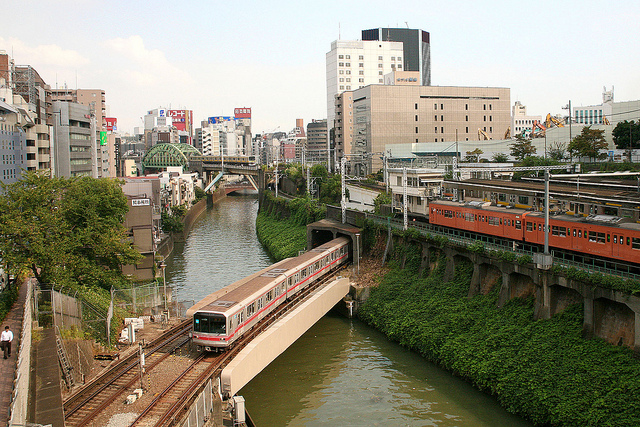Last update on
When some people think of transportation in Tokyo, they imagine the crazy looking maps they’ve seen of the subway lines. With so many stops covering such a large area, it seems like a daunting system. However, Tokyo train and subway lines are among the most extensive and convenient in the world. There a few other transit options as well but you’ll find them less attractive. The buses are difficult to learn and taxis or private cars are expensive. Rental cars can be convenient because there are many options near railway stations, making them easy to find but parking is a bit of a pain – not to mention expensive. Most tourists choose to use the train systems because they are cheap, fast and easy to use.
Tokyo Train Types and Lines
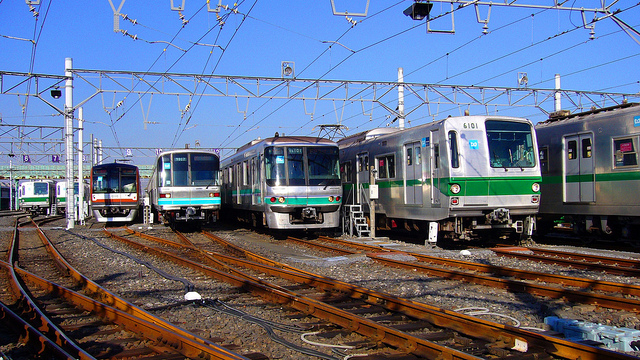
The Tokyo Metro and JR lines
There are a mixture of around a dozen JR, Metro and private companies that make up the Tokyo train lines. Prices are all similar between them but the number of trains on a line can vary. You might have to wait only a few minutes for the next train on some lines, while waiting ten minutes for the next train on others.
JR lines
JR has more lines than any other railway in Tokyo, which is useful for those holding a JR Rail Pass. The JR system includes the Yamanote,Chuo, Saikyo, Keihin-Thoku and Keiyō lines.
Metro
The Tokyo Metro has 9 lines that includes the Chiyoda, Ginza, Fukutoshin (Yurakucho New Line), Hanzomon, Hibiya, Marunouchi, Nanboku, Tozai and Yurakucho lines. The Toei Subway has four – Asakusa, Mita, Oedo and Shinjuku lines.
Private railway companies
These are the Keio, Odakyū, Seibu, Tōkyū, Keikyū, Keisei, and Tobu lines that serve the Tokyo area.
Shinkansen
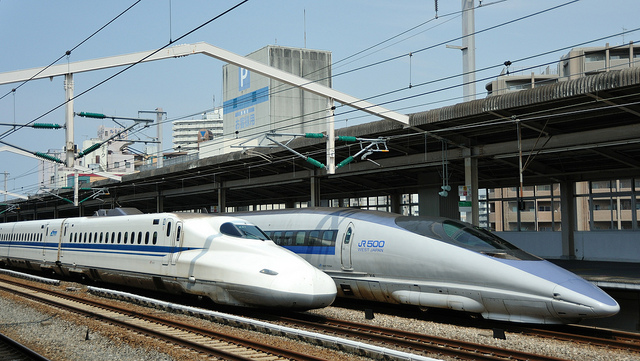
This is Japan’s bullet train, a fast and luxurious category of trains that is rarely used for transportation in Tokyo itself. Rather, it is the fastest solution for those who want to go a bit farther afield-for example, to neighboring places like Nagoya or even the old capital of Kyoto, which is on the other side of the country. If you do plan on taking such a trip, it may be wise to check the next section on rail passes.
What you Need to Ride the Train in Tokyo
JR pass
What it does: It lets you take the Shinkansen (excluding “Nozomi” and “Mizuho”) and JR subway lines in Tokyo. As mentioned above, this is the best option if you want to travel around Japan in a short amount of time.
Where to purchase: You must purchase this online before coming to Japan (up to three months in advance) and it will be mailed to your address.
Cost: 29,110 yen for 7 days, 46,390 yen for 14 days and 59,350 yen for 21 days (Please check the JR Rail Pass website for the current details)
Welcome Pass: Tokyo Metro’s WELCOME! Tokyo Subway Ticket
What it does: Provides unlimited use of the Tokyo Metro and Toei Subway lines at a discount. You can use it for 1-3 days and it includes a one-way ticket from Haneda Airport to Sengakuji Station. Remember, this pass does not apply to other Tokyo train systems like JR.
Where to purchase: Tokyo Tourist Information Offices, Tokyo Tourist Information Centers (in Tokyo Metropolitan Government, Keisei Ueno Station and Haneda Airport), and JNTO (TIC and Overseas Offices).
Cost: 1,200 yen
IC Cards Suica/Pasmo
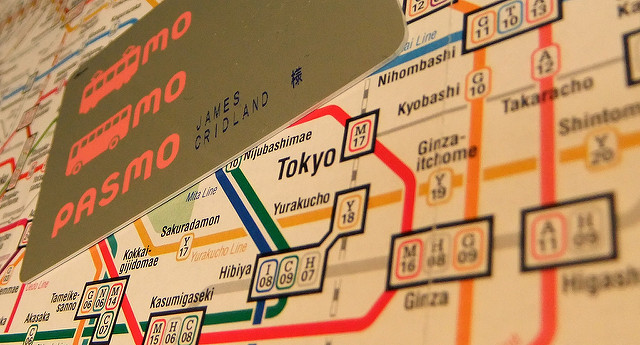
What they do: These preloadable cards don’t offer any discount but let you tap and enter stations without having to calculate fares for each ride.
Where to purchase: Suica cards are found at JR stations and Pasmo is found at non-JR stations. Both can be purchased straight from the ticket machine. Choose the English language option for best ease of use.
Cost: 500 yen refundable deposit
Are you staying in Japan for less than 28 days?

If so, you’re the perfect candidate for “Welcome Suica” new IC cards made especially for tourists.
This IC card is deposit free, available in different values: 1,000JPY , 2,000JPY , 3,000JPY , 4,000JPY and 5,000JPY.
Please note that the amount is not refundable.
https://www.jreast.co.jp/e/welcomesuica/welcomesuica.html
Individual tickets
What they do: This is the best option if you’re not planning to travel very much on the Tokyo train system. You must calculate your fare based on your destination for each ticket and place your ticket into the feeder at the ticket gate.
Where to purchase: Ticket machine or ticket counters at all stations
Cost: Based on route/destination (Example fare: a 20-minute ride from Tokyo to Shinjuku station is 200 yen)
Things to Remember about Transportation in Tokyo and Japan
Manners and Respect
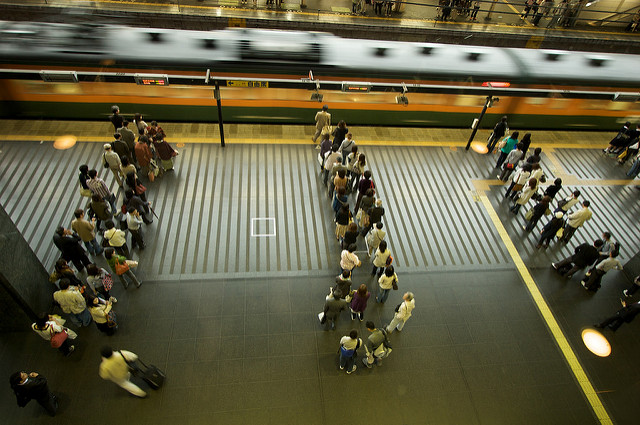
As a tourist, you should be especially mindful of how you conduct yourself when using public transportation in Tokyo, where many people are rushing to their next train. You must do things like respectfully line up with the orderly markings on the ground near the tracks that designate where trains will stop and doors will open. One of the remarkable things you will notice about Japanese transit systems in general is how spotless everything is. This is because of the no eating, drinking and smoking policy. Additionally, talking on the phone requires a particular etiquette you can read about here. When in doubt, simply observe Japanese people around you and follow what they are doing.
Special Cars (Women-only)
At certain times of the day, noticeably rush hour (7:30-9 am and 4-5 pm), there are women-only (josei-senyō sha) cars. If you are a man and happen to find yourself on a train surrounded by only women, you are likely to have stumbled into this type of car. People allowed on this car during specified times are women, as well as boys and girls under the 6th grade and disabled people along with their attendants, as long as one of them is female.
First & Last Trains
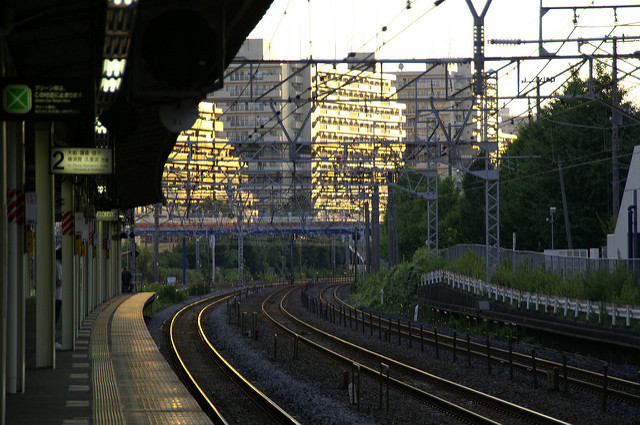
Perhaps the only negative thing about the Tokyo train system is that, unlike in many big cities, it doesn’t run around the clock. The last train can vary in time across the city, but is typically close to 1 am and in the event that you miss it, you will have to wait for the first train around 5 am.
Useful Apps
For the Subway system: Navitime for Japan Travel is very straightforward- just enter in your stations and it gives you a list of routes available along with the exact cost. It also lets you search by landmark.
For a Map: CityMaps2Go is an app that lets you download the map of where you’ll be so that it is available offline. It gets directions for you (even offline!) and you can save places to go as stars on the map.
For more app suggestions and tips, read our article on essential apps in Japan. Having options offline like the CityMaps2Go is a smart backup plan but the best way to help you get around Japan is to have online access. If you’re going to use apps to help you during your stay you must have ways to stay connected at all times.
Navigate the Tokyo Train System with Portable WiFi and Beyond
As you travel during your stay in Tokyo, you will find yourself enjoying its world-renowned transit systems, making the journey just as enjoyable as the sights you see. What might have seen overwhelming at first will soon become comprehensible and natural. You’ll feel like a ninja navigating between the train lines as you make your way to your destination. However, even with a lot of preparation, transit in a foreign country can be confusing at times. Which is why it’s recommended to rent a SIM card and/or portable WiFi to make your stay as stress free and enjoyable as possible!

